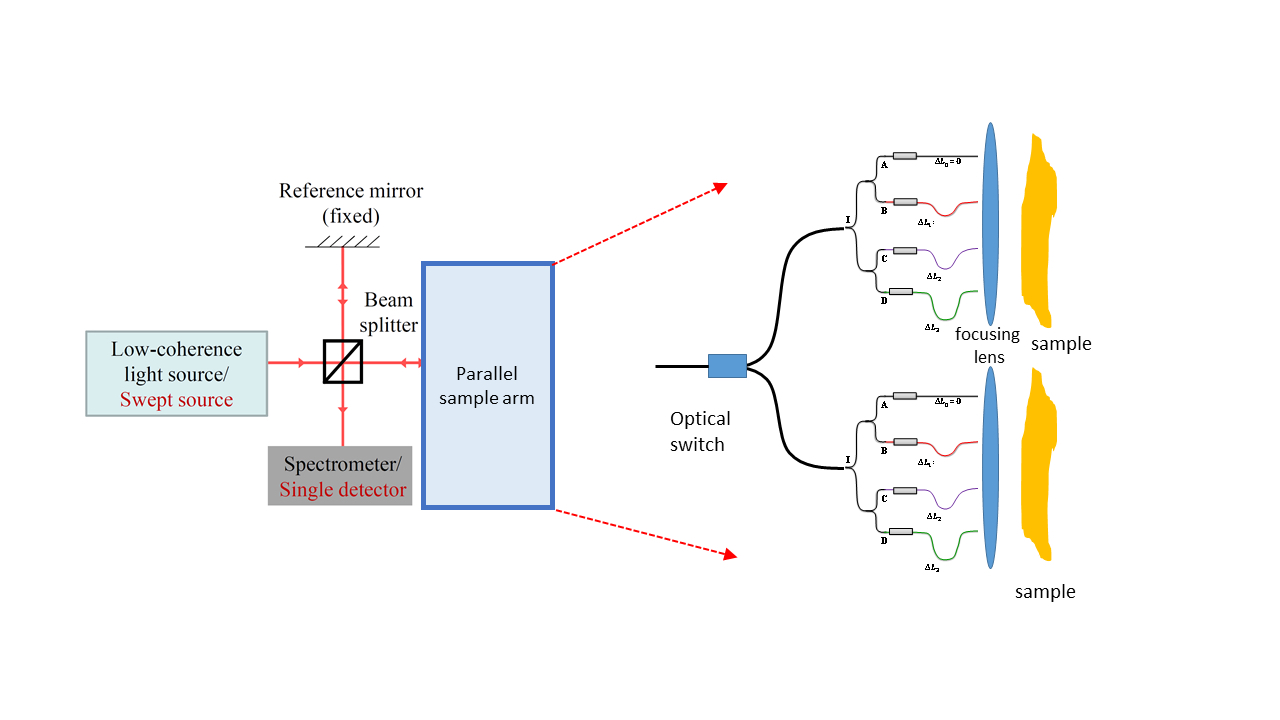Retinal imaging breakthrough

Scanner concept (courtesy of Dr Avci)
European researchers are developing a new real-time scanner that will create a full image of a moving eye without any blurring.
In partnership with photonics innovation hub, ACTPHAST 4R, scientists at Vrije Universiteit (VU) Amsterdam are progressing their scanner concept to a demonstrator stage to acquire data faster than existing optical imaging technologies.
Lead researcher, assistant professor Imran Avci from the Department of Physics and Astronomy at VU Amsterdam, said: “Diagnoses of eye diseases that could lead to blindness require good quality images at an early stage. Eye abnormalities can be so very subtle in the early phase that standard OCT [optical coherence tomography] can miss these tiny changes. Because our eyes are constantly moving to refresh the visual input, even at a microscopic level, it makes eye imaging very difficult without having blurred images.
“Our scanner is different: with the data acquired fast enough, the overall goal is to have a real-time imaging system. The rapid switch will enable us to perform real-time high quality moving footage, or a ‘video’ of your eye.”
The scanner works by acquiring data from the light signal at rapid speeds by ‘bundling’ groups of information together.
“Our new scanner will acquire the light signal data at least hundred times quicker than OCT systems that exist today,” Dr Avci continued. “Taking 100 to 120 reference points, our scanner ‘bundles’ them together, acquiring 20 arms at a time. However, it is our patented ‘switch’ that moves from bundle to bundle in nanoseconds that gives us the ability to quickly acquire the images in real-time.
“Processing each sample arm means existing technology is not fast enough to handle constant eye movement. We can speed up the traditional OCT imaging system while keeping its sensitivity at a reasonable value. Our imaging speed improves while the signal to noise ratio is not sacrificed too much. The faster speed makes it possible to image dynamic situations or fast-moving parts of the body, like the eye.
“The OCT we have today uses a process called ‘eye-tracking’, which can be tricky and involves many elements to do it right. However, if we can manage to create an image before the eye moves – in five to 10 sec or so – then there is no need for tracking schemes,” said Dr Avci.
Specialising in the deployment of cutting-edge photonics technologies, ACTPHAST 4R gives researchers in academic institutes all over Europe the chance to turn their breakthrough scientific concepts into fully-functioning industrially-relevant demonstrators.